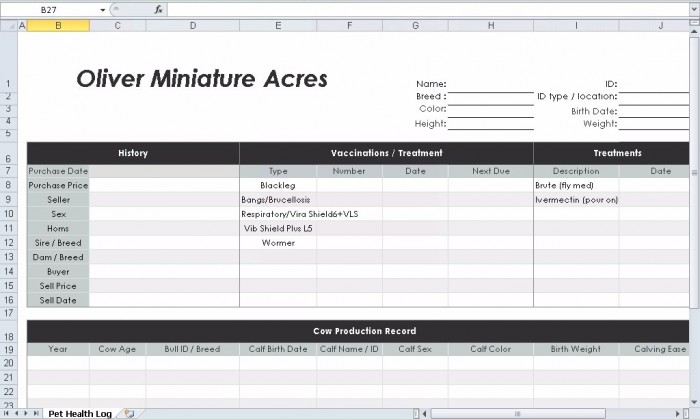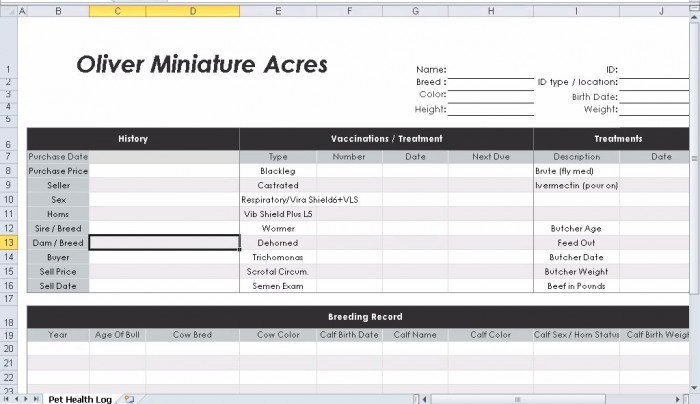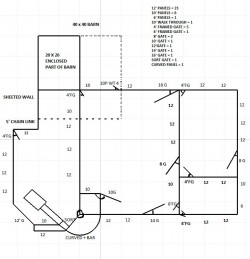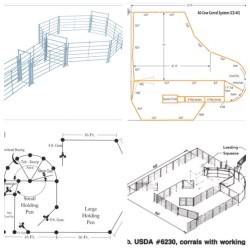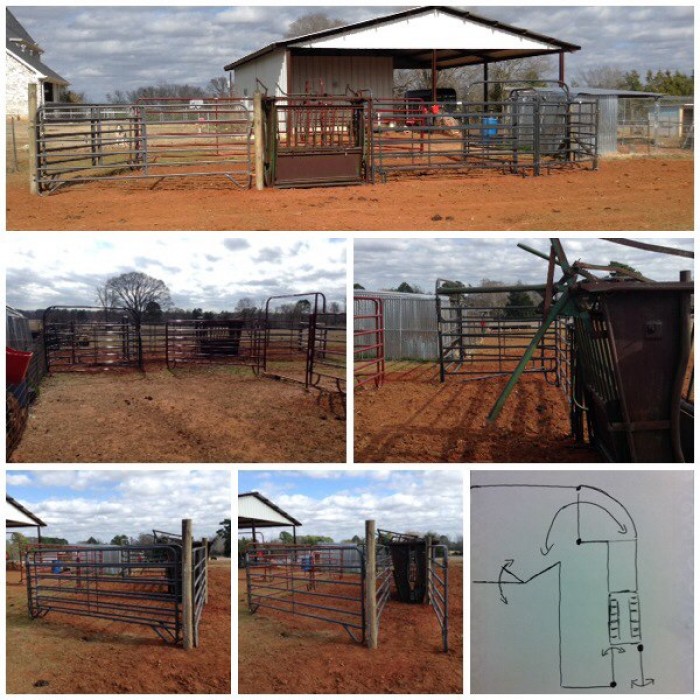Tips on Getting Started
Tips Intro
Please hang in there with me, this page will be a work in progress! I am going to try to attempt to list out all things to help you successfully get started in your own mini cow adventure. Please email me if there is anything you want to know about from paper work, sales tax exemption, purchasing, vaccinating, breeding, genetics, pregnancy testing, calving, fencing, feeding, barns, sheds, feeding out, butchering....... I will do my best to gather all info and good sites for reference. If you find good links or know good breeders let me know so I can list them. Again email me with info or questions. Please also remember that I am not the expert but am trying to obtain the most accurate and helpful info, if you are an expert in this field I would love to learn from you!
This page has now turned into 2 pages so please take a look at both. Probably will turn into more than 2. I am trying to remember to update the dates so you will be able to see if new links or information is available under each topic.
Vaccinations & Deworming & Fly Control
Vaccinations
Please don’t skip this part! Because for just a few dollars per head per year you can protect your investment. Even if you’re raising all natural or grass fed beef, please, protect you’re breeding stock at a minimum. Since you will not be eating your breeding cows or bull vaccinate them.
Check with your local county extension agent or large animal vet to find out what diseases or worms are prevalent in your area!
First off, be aware that there are differnt types of vaccines (modified live and killed) some are safe for all cows, some are not, some get a better immune response, some need boosters. For the difference in vaccination types and some tips check out this website. This website/chart lists all vaccines tells you which ones are safe for bred cows, calves... and shows what diseases they protect against. Please read all labels, keep out of the sun, keep refrigerated....Don’t be like my granddaddy and carry them around in the door of your truck! Vaccination protocol from my vet, my vets explanation of different types of vaccines and his list of diseases. Here is OSU’sexplanation and protocol for known or unknown vaccination history. Another good website.
Deworming
Be aware that there are lots of types of dewormers, pour-ons, injectables, pastes.... Here is a great chart. Again contact your local county extension office or large animal vet for parasites in your area.
Fly Control
To be effective you need to attack this from several sides. As no one thing will get rid of all the flies. Fly Lice control chart , ear tag size chart, ear tag chart, Win war against flies article.
- Pour ons - can be poured directly on cattle for about 3 week fly control, heavy use or repeated application in the same place may cause some skin irritation or hair loss. Examples : Brute, Ultra boss, Clean Up II
- Sprays - diluted sprays will only control flies for a short time, but will not cause irritation or hair loss.
- Back rubbers oil based with permethrin concentrate or dust bags - will allow cows to dose themselves. Place rubbers where cows have to go through to eat or drink till they learn to use them.
- Cattle Curtain - very cool applicator, though expensive, it’s similar to a back rubber only better! Website
- Feed through IGR - is an insect growth regulator that passes through the cow and inhibits the fly development in the manure, so that they don’t turn into mature flys. Can be bought in syrup tubs, mineral tubs, loose mineral or fly blocks.
- Premise sprays - concentrated sprays for use around pens or barns.
- Fly traps or fly tape - fly terminator brand!
- Ear tags - for season long control read the directions and apply the appropriate number of tags and during the most appropriate month to get the best coverage. Website Rotate brands/chemical for best results.
- All natural control - Fans within the barn, Avon skin so soft....
- Fly predators - expensive and hard to control on larger acres. Website
Here’s what we do!
Calves: around 4 months old
- Ultabac 8 with booster 4 weeks later.
- Virashield 6 plus VL5 with booster 4 weeks later.
- Bangs also called Brucellosis (administered by vet only) For Heifers only 4 to 10 months of age.
- Optional - pink eye and/or Haemophilus somnus - can be combined with other blackleg vaccines such as alpha7 MB-1 and Vira shield 6 plus VL5 somnus.
- Deworm just prior to leaving our place and/or with the rest of the cows in January or July.
- Delice - January or February (Cylence) with cows or as needed.
- Fly control as needed - Brute Pour on, spray, back rubber with mineral oil and permethrin concentrate, syrup mineral tub with IGR
- Ultrabac 8 - Annually in January
- Vira Shield 6 plus VL5 - Annually in January
- Optional - pink eye and/or Haemophilus somnus - can be combined with other blackleg vaccines such as alpha7 MB-1 and Vira shield 6 plus VL5 somnus.
- Deworm - January (Dectomax) & July (Longrange for cows & Dectomax for Bulls).
- Delice - January or February (Cylence) then again 3 weeks later.
- Fly control as needed - Brute Pour on, spray, back rubber with mineral oil and permethrin concentrate, syrup mineral tub with IGR
Inbreeding Coefficient
People ask about linebreeding vs inbreeding. Well my answer is usually if it works out it’s linebred and if it doesn’t it’s inbred. However the nitty gritty is that fertility goes down, growth goes down (stature & decreased weight gain) and overall life span. Full sibling matings or offspring mated back to parent, both results in a 25% IC (inbreeding coefficient). Half sibling matings is 12.5% IC and half cousins (single common grandparent) are a 3.1% IC. If you are using registered stock some breed registries have a "mating predator" that calculates IC. The Hereford Association has one if you are a member and use the "EDP search - authorized user" or "my herd" function. You can run predictive IC values, the more generations the more accurate. Here is a link to more info, a longer document link, and for good measure link & link. The research shows the lower the value the better, and if you run the IC on the majority of the registered mini Herefords their numbers can get pretty high. It was recommended to me that we try to stay under 32%, and so we plan on doing that, with a goal of around 20%.
Pink Eye
Ok so from time to time I get the question about pink eye. I've said before that I've never had a case, well now I have. Its more common in Herefords, but can happen to any cow. The bacteria lives around everyone and can be transmitted to other cows by flies. Ok so we look at our cows daily! That helped us, we noticed it right off, and called the vet, hoping she just that's something in her eye. She had drainage only in one eye, and she was keeping that eye half closed. We separated her from the herd and took her in the very next morning. He said we caught it early, and she only had a small ulceration. He gave her a shot of LA 200 (about 35 ccs total) and split it up in 3 different places in her neck. He also gave her a shot around her eye. Told us to put fly spray on every cow if we had any flies and to put a fly mask on her if we had a lot of flies. We kept her separated about a week then reunited her with the herd. He said if we didn't have another case during that time we should be in the clear, and we didn't. He said if she had a reoccurrence, then we could give her a pink eye vaccine shot. Or we could give it to the rest of the cows too, if we had more contracted it. As long as you catch and treat early, you shouldn't have any other problems and the cows vision will not be affected.
Record Keeping
Genetics and Crossbreeding
Crossbreeding can be done to downsize, add beef, add milk production and to change color combinations. You can downsize cattle by selecting smaller sized standard heifers or cows and breeding them to a miniature bull. Your calves height should be between the dam and sires. If your looking for a mini milker that produces beefier calves for the freezer, try crossing a beef bull to a dairy cow or use one of the dual purpose breeds such as dexters.
Some beef crosses:
Hereford X Angus = Black White Face or motley face Calves
Hereford X Black White Face = 25% Red Hereford, 25% Black Hereford, 25% black motley face, 25% red motley face
Black X Black White Face = 50% all Black, 50% black white face or motley face
Black X Black Belted = all Black or black with white belt
Hereford X Black Belted = Black White face or Belted Black White Face
Black Belted X Black white face = all black, black white face or belted white face
*some of the white face calves will be motley face*
*% of belts that transfer will depend on if the original cow or bull has both copies of the belted gene or just 1 copy to pass to the calf.*
Please refer to the experts in crossbreeding and genetics:
Websites about crossbreeding: Crossbreeding Systems for Beef Cattle, Crossbreeding beef cattle,
Websites about color genetics: Color inheritance in beef cattle, Color patterns in crossbred beef, Genetics of coat color in cattle,
The Truth About Horns
Cattle can be horned, dehorned (meaning someone removed the horns), polled (meaning genetically hornless), and scurred (meaning a rudimentary horn growth, never fully develop into horns). Some breeds are all horned like Longhorns, Dexters, Zebus and Horned Herefords. Some breeds are naturally polled like, Angus, Galloway, British Whites and Polled Herefords.
Pregnancy Testing
Breeding
First calf heifers need to be at least 15 months old to breed, but what is more important than age is that they need to be at least 65-70% of their mature size. If they reach that appropriate size and age then you can breed them to a bull that preferably throws small calves. If your bull does not have any calving data, then breed to a similar sized or smaller bull than your heifers. Look at the bulls sire and dam and their own birth weight. It's good to track their heat cycles so you know when they will be coming into standing heat. This will help you know an exact due date, so you can closely watch and assist if needed. If they were bred around 15 months they should calve when they turn two years old. At two years old they should be almost full grown or 85-90% of their mature size.
Cattle Handling
A good system is important to working cattle. Your safety and theirs are very important. We have just upgraded our configuration. There are numerous ways to set up for different herd sizes, cattle sizes, squeeze chutes, head gates and loading pens. Here are some pictures of our original system, our new pens and some idea pics. Websites: beef.osu.edu PDF, 2.ca.uky.edu PDF, awesome pics, ag.ndsu.edu - excellent building plans for (chutes, corrals, hay mangers, feeders, barns....).

